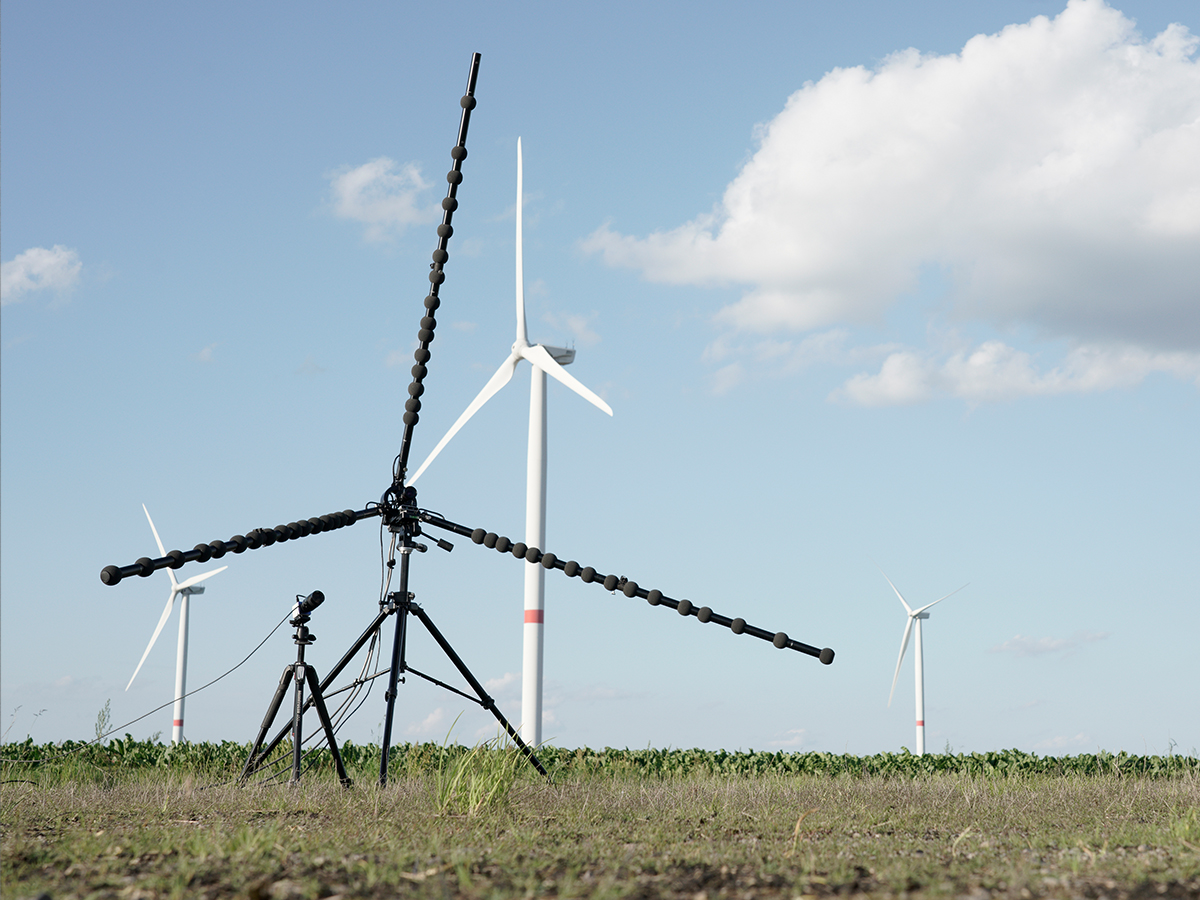For "Wind Power Day" on June 15, gfai tech is presenting an innovative technology that detects defects in wind turbines more quickly and efficiently: the Acoustic Camera. The Acoustic Camera enables precise identification and analysis of noise emissions that signal potential operating faults. This innovative method significantly increases the efficiency and reliability of wind turbines.
Localization of noise emissions
Wind turbines are complex technical systems consisting of a large number of mechanical and electrical components. Despite their robustness, they can be affected by various factors such as material fatigue, wear or unforeseen external influences. Traditional inspection methods are often time-consuming and can miss small but potentially critical defects. Our Acoustic Camera enables precise localization and analysis of noises directly during operation. Maintenance teams can intervene quickly and effectively to correct problems before they lead to costly and potentially dangerous equipment failures.
Acoustic mapping
The Acoustic Camera works with a large number of microphones arranged in a specific pattern. These microphones record the sound waves emitted by the wind turbine and generate an acoustic image or video. This recording shows exactly where and how strong the sound sources are. With this data, engineers and technicians can pinpoint sources of interference and take action to minimize the faults and noise - whether by adjusting the blade shape, the rotor blades or by changing the operation of the turbine.
The introduction of Acoustic Camera technology into maintenance practices represents a significant advance in the wind power industry. Wind turbine operators can use the measurement results to maximize uptime, minimize maintenance costs and ensure that turbines operate more efficiently. One example of the precise localization of sources of error was provided by our Star48 AC Pro Acoustic Camera, which visualized noise emissions on a wind turbine in various frequency bands at wind speeds of 7 to 10 m/s in the free-field. Flow noise at the rotor blade tips and from the gearbox could be identified within a few minutes. You can find out more about the measurement under "Free-field measurements of large objects during operation".

